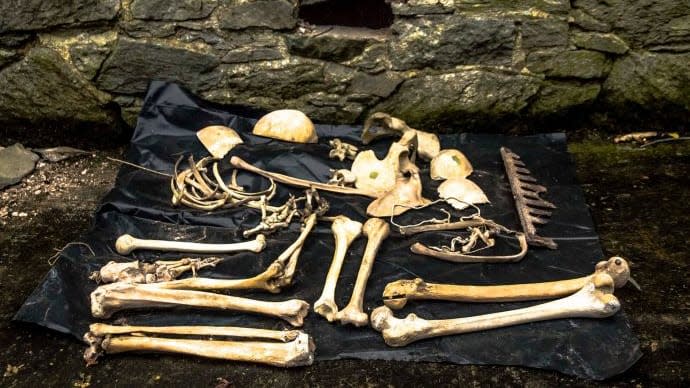Mystery Partial Skeletons Found in Ancient English Abbey Wall

The first sign that something was amiss to the masonry worker doing repairs on the ancient Mount St. Bernard Abbey in Leicestershire, England, on Monday were the two femur bones bound with rusting wire protruding from the brickwork.
Upon closer inspection, he and the other crew members then saw a cavity in the old wall that was filled with human bones, which appear to have been carefully hidden around the time the abbey’s charter house was built in 1860.
“On removing some of them it soon became apparent, to his shock, that they were human bones,” the abbey said in a statement to The Daily Beast about the grim discovery. “On closer inspection, it could be seen that they had been used for an anatomical display as some of them were wired or screwed together and numbered.”
The bones are thought to be from two people but they do not make up two complete skeletons, raising the question of where the other body parts are. “There were a couple of bones already out, but when we shone a torch through the hole, we saw lots more,” said the monastery’s abbot, Father Joseph Delargy. “What was really creepy was some were still wired together, making recognizable hands and feet.”
Police called to the scene immediately discounted any criminal activity, but the abbey records do not indicate any sort of historical display of skeletons or other exhibitions in which bones would have been wired together for any purpose. “We contacted the police and after a thorough assessment of the situation they were satisfied that these were bones connected with educational or medical purposes and were not connected with any crime,” the abbey said.
Monks who live in the Trappist monastery plan to return the bones to the wall cavity once the work is completed and construct a monument given the fact that whoever put them there 160 years ago likely had a reason to do so. “The mystery is what were the bones doing there; who put them there and when?” the abbey said in its statement.
“One theory is that perhaps at the time of the construction of the chapter house we were contacted by an educational institution or hospital who no longer had any use for the bones asking if we could suitably bury them,” the abbey statement says, even though there would have been ample burial ground in the cemeteries in lieu of hiding them in the masonry.
Get our top stories in your inbox every day. Sign up now!
Daily Beast Membership: Beast Inside goes deeper on the stories that matter to you. Learn more.

